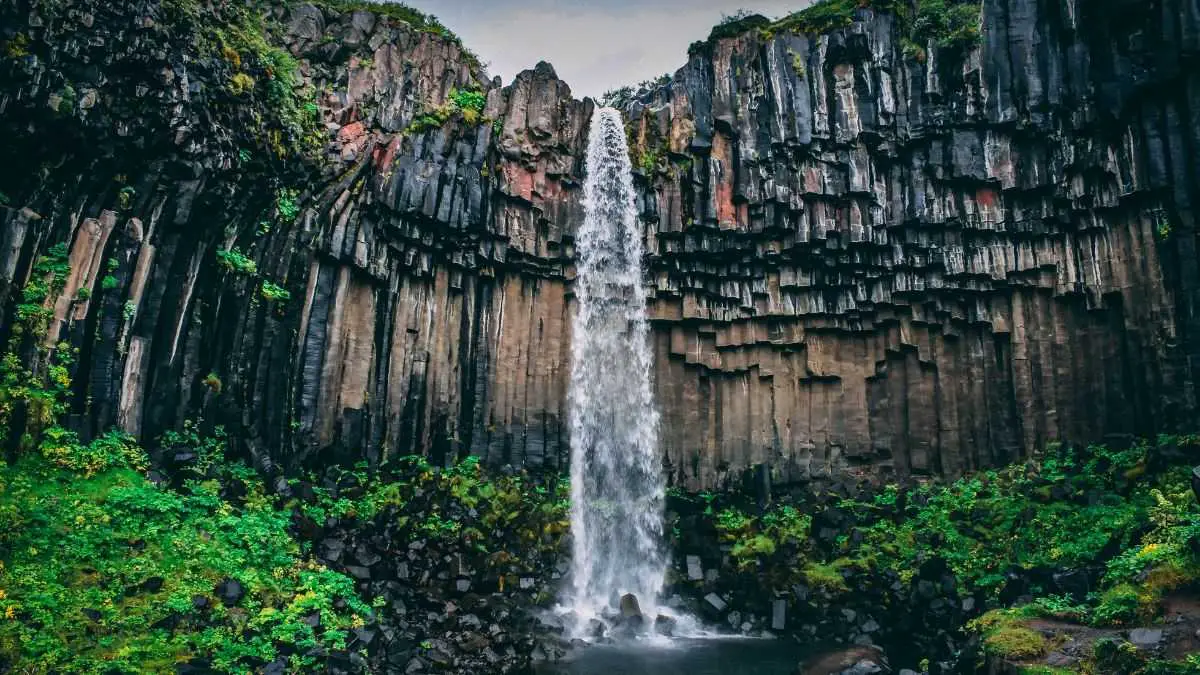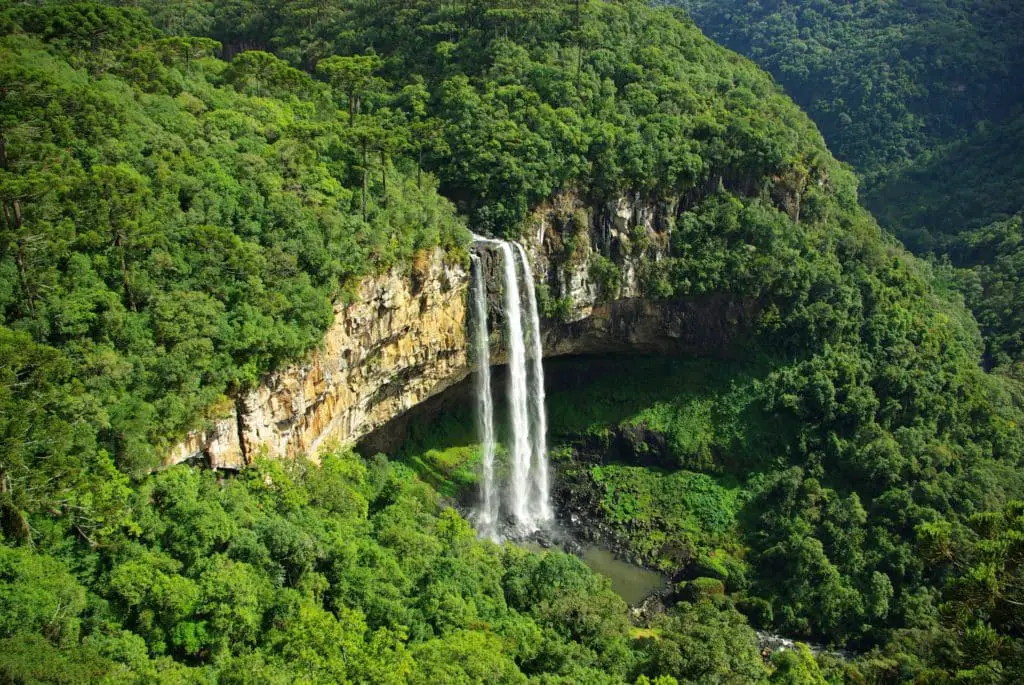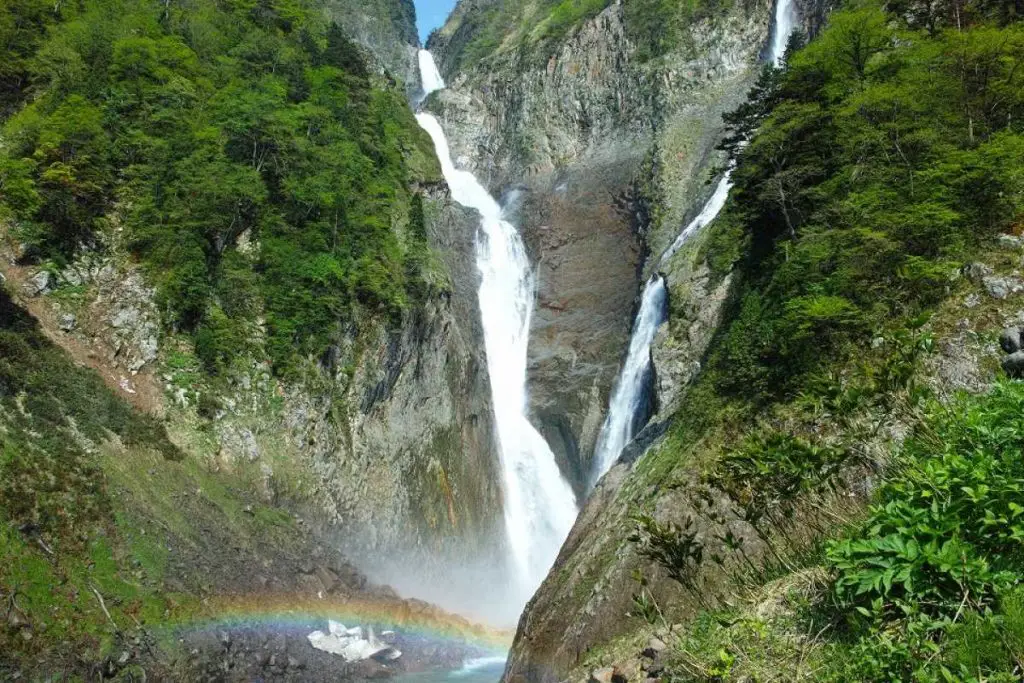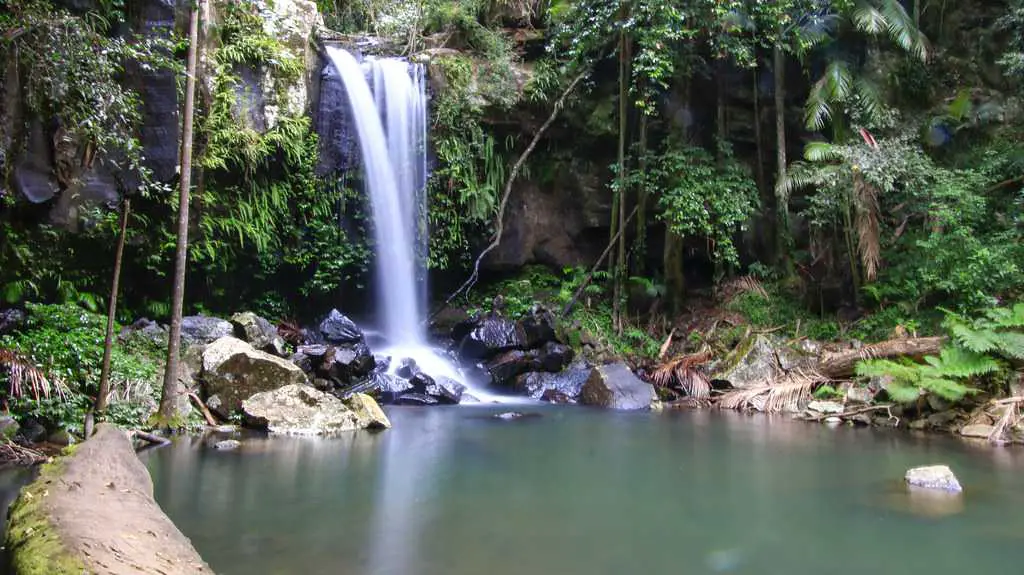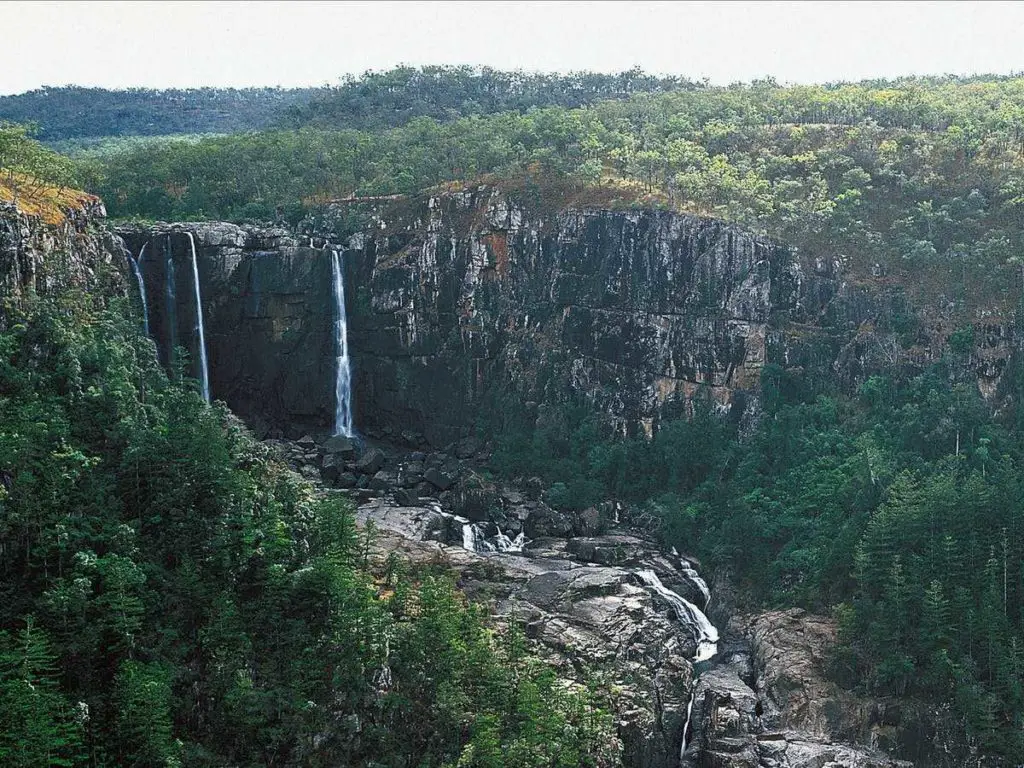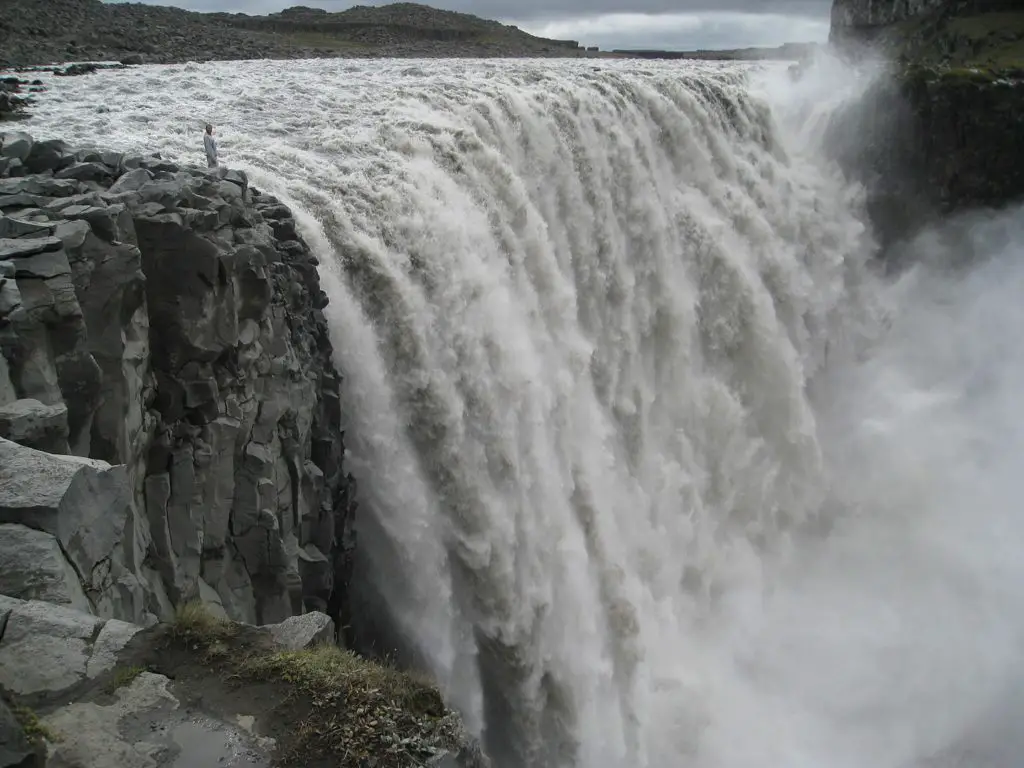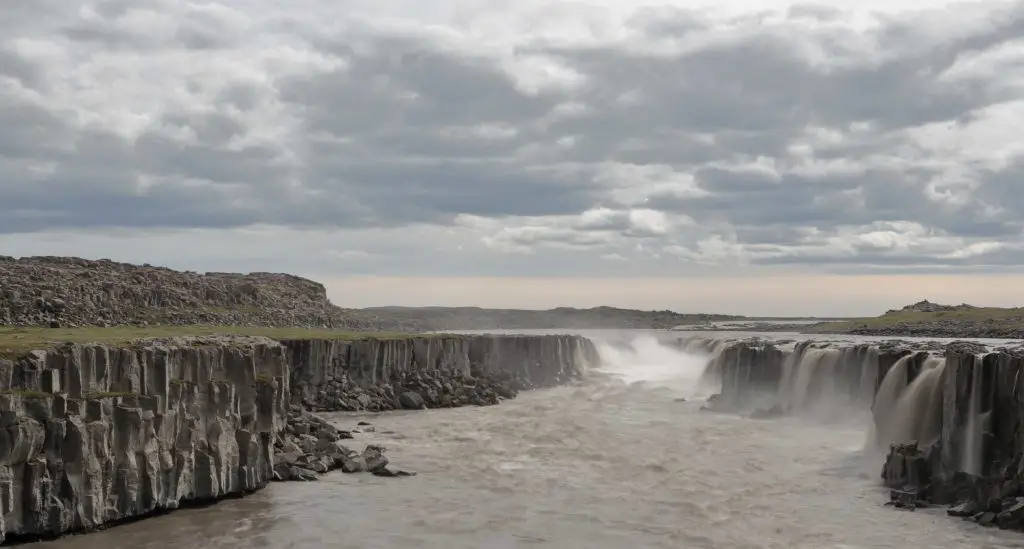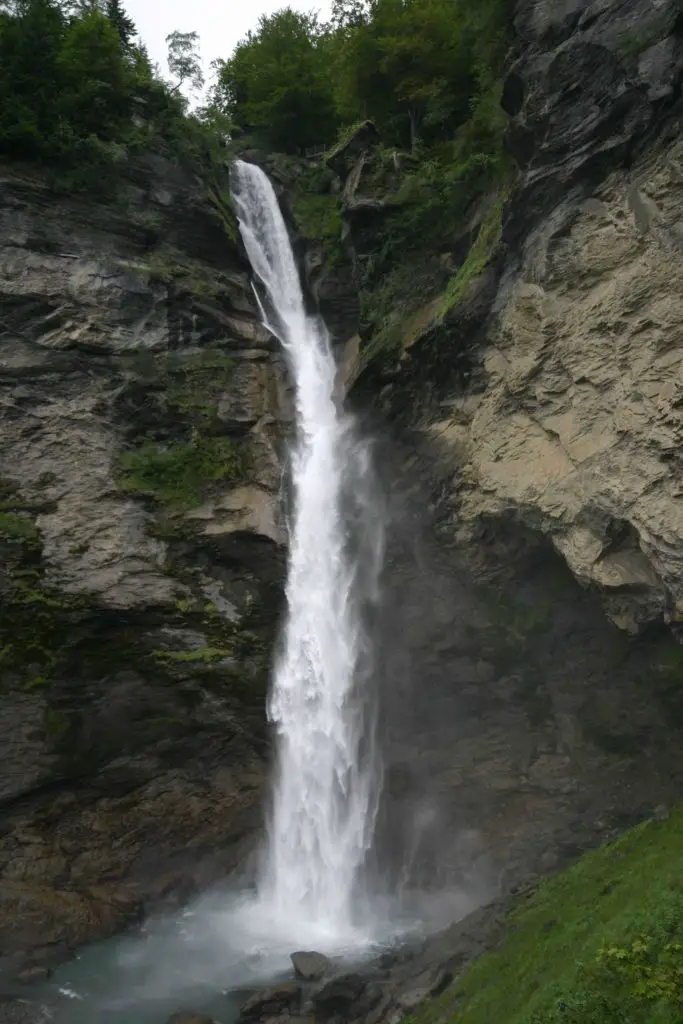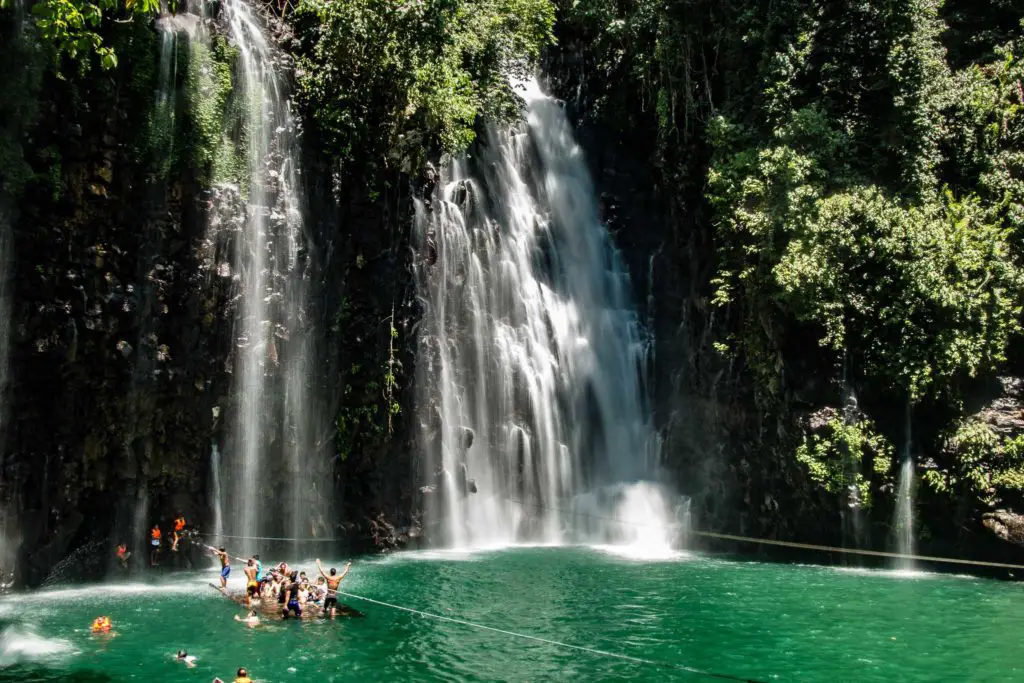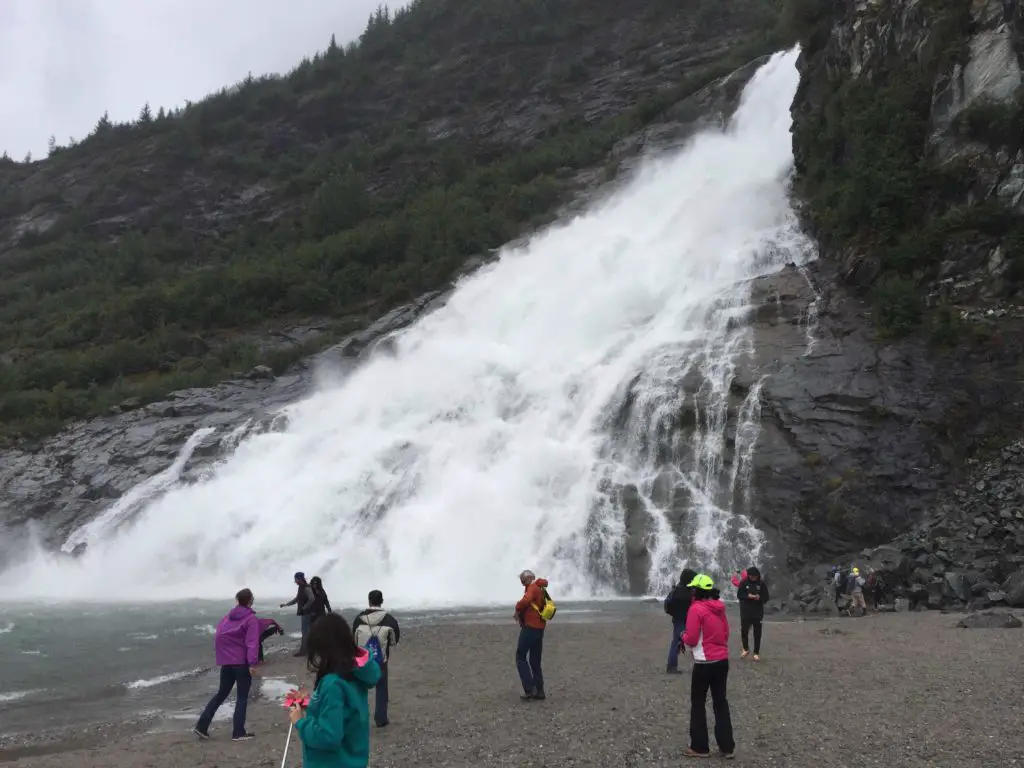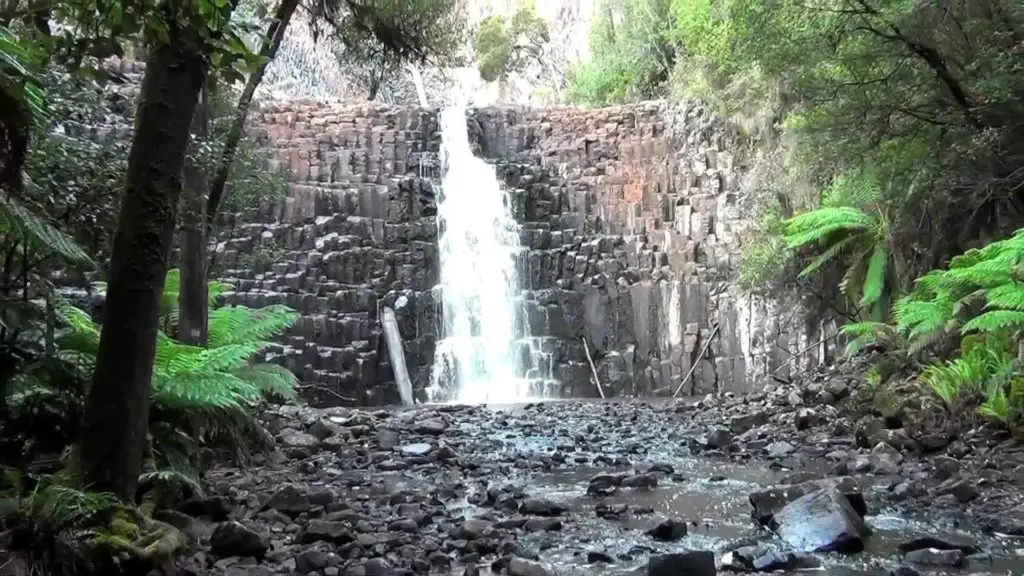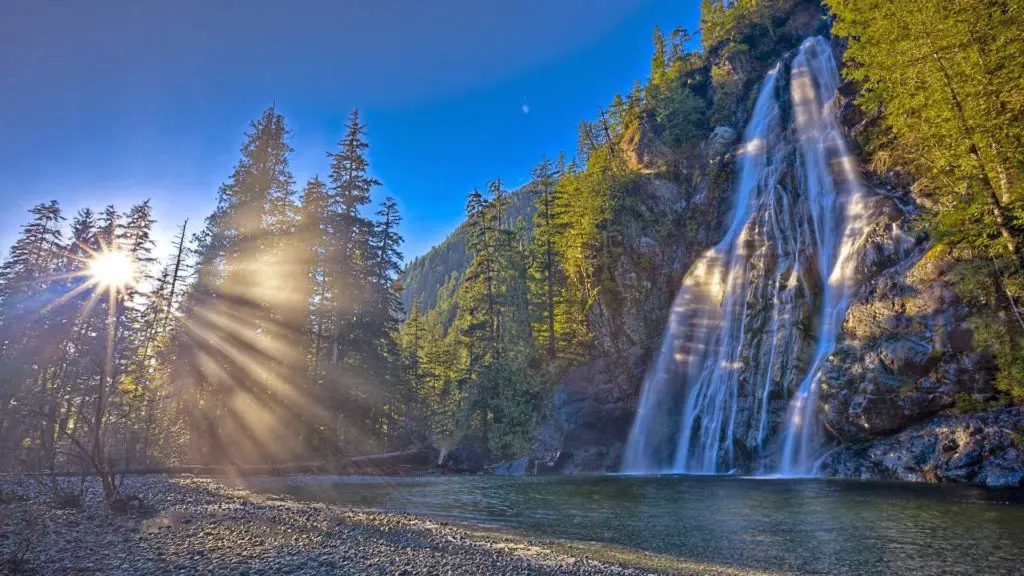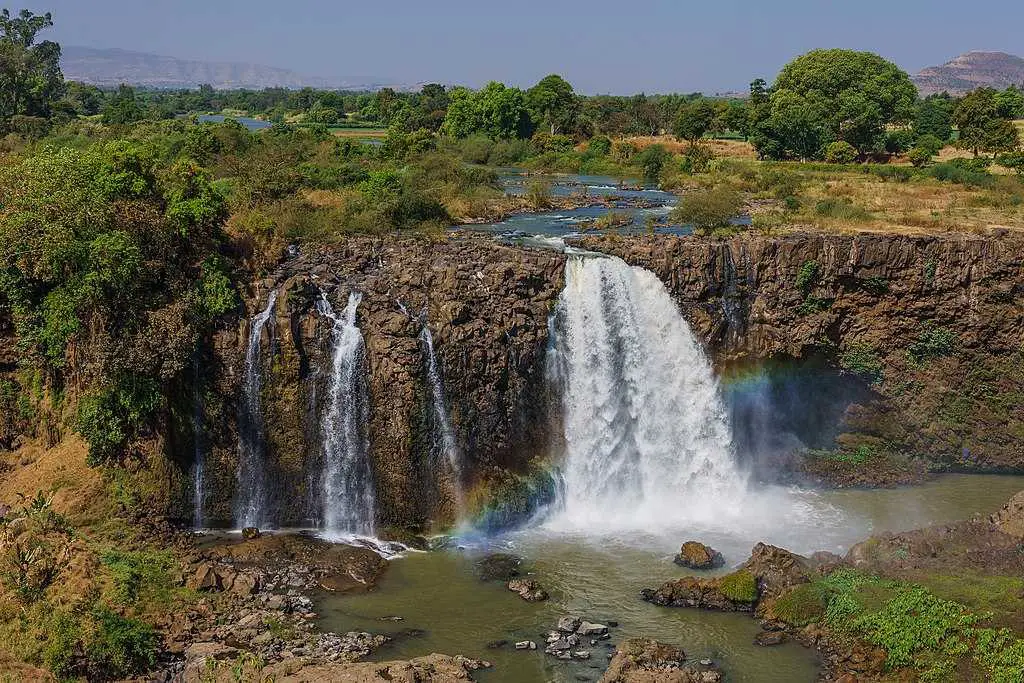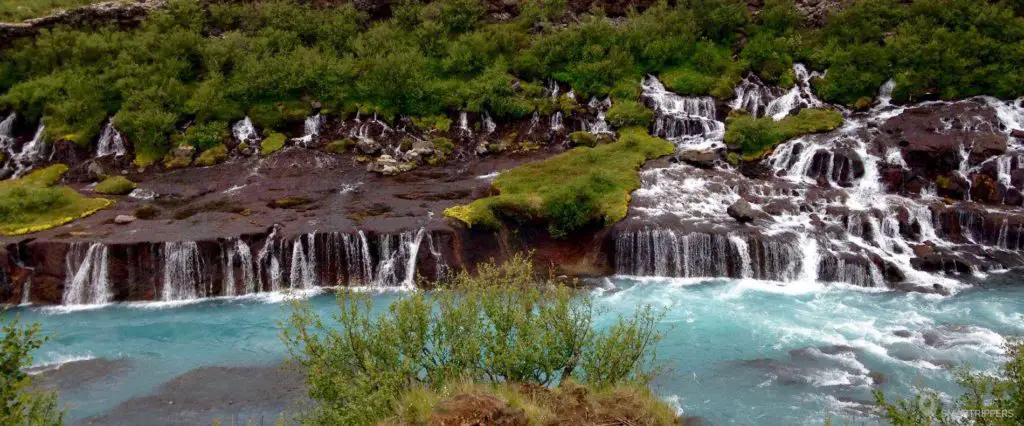Waterfalls are majestic bodies of water. Whether they stem from streams that run into rivers or into the ocean, they are a sight to behold. Waterfalls are classified based on their descent.
The different types of waterfalls are Punchbowl Waterfalls, Plunge Waterfalls, Multi-step Waterfalls, Horsetail Waterfalls, Frozen Waterfalls, Fan Waterfalls, Chutes, Cataracts, Cascades, and Block Waterfalls.
Contents
Punchbowl Waterfalls
Waterfalls with a wide catch pool (the area where the water is deposited) are referred to as punchbowl waterfalls. Usually, you are able to swim in the catch pool because it is generally peaceful.
An example of a punchbowl waterfall is the Punch Bowl Falls in Eagle Creek located in the Columbia River Gorge National Scenic Area of Oregon, USA.
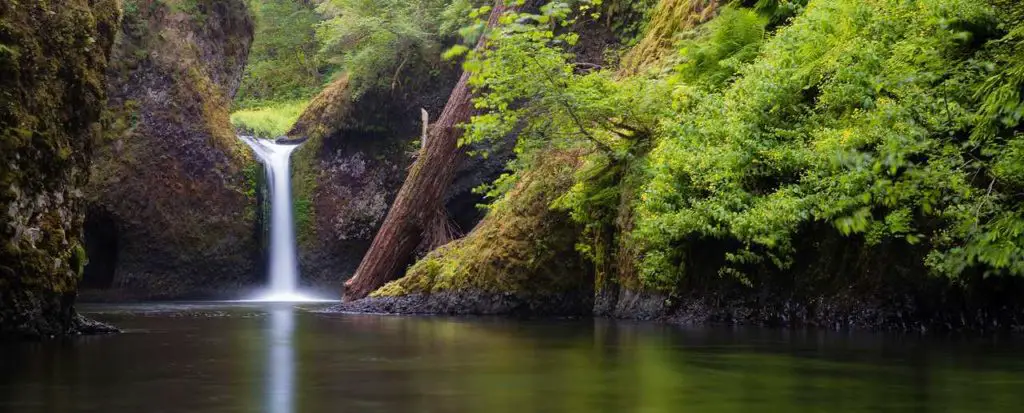
Plunge Waterfalls
Waterfalls that drop into a vertical flow and often loses contact with the bedrock (behind the falling water) are called plunge waterfalls.
Blencoe Falls and Curtis Falls, in Australia. Hannoki Falls, the tallest waterfall in Japan. Caracol Falls in Brazil and Brandywine Falls in Canada are all examples of plunge waterfalls.
Multi-step Waterfalls
When several series of waterfalls drop into one pool (one after the other) in a tiered manner, it forms a multistep waterfall. It looks like several pools with their own waterfalls.
The Ouzoud Falls in Morocco, Fukuroda Falls in Japan, Jagala Falls in Estonia, and the Dettifoss, Gullfoss, and Selfoss in Iceland are all examples of multi-step waterfalls.
Horsetail Waterfalls
When a waterfall flows into its pool while keeping contact with the bedrock behind it, it is referred to as a horsetail waterfall.
Reichenbach Falls, Switzerland. Mount Damper Falls, New Zealand and Pagsanjan Falls in the Philipines are examples of horsetail waterfalls.
Fan Waterfalls
Fan waterfalls also maintain contact with the bedrock as the water falls into the pool. However, unlike horsetail waterfalls, they have a fan-like shape.
Examples of fan waterfalls are Virgin Falls in Canada, Dip Falls in Australia, Nugget Falls, Alaska (empties glacier water into the ocean via a beach )and Tinago Falls in the Philippines.
Block Waterfalls
Block waterfalls are thunderous and majestic. They pour down from wide streams or rivers. Examples include the Blue Nile Falls in Ethiopia, Ka Choung Falls in Cambodia, and the Niagara Falls along the United States and Canadian border.
Chute Waterfalls
A Chute Waterfall occurs when a large volume of water flows through a very narrow passage that creates a very strong pressurized waterfall current. Egan Chute on the York River, is an example.
Cascade Waterfalls
When a waterfall descends on a series of rocks it is called a cascade. Krimml Falls, Austria and Barnafossar Falls in Norway are good examples.

Cataract Waterfalls
By far the largest and most powerful (in terms of flow) waterfalls. The Victoria Falls in Zambia is a cataract waterfall. A cataract waterfall occurs when a large amount of fast-moving water spills over a cliff.
